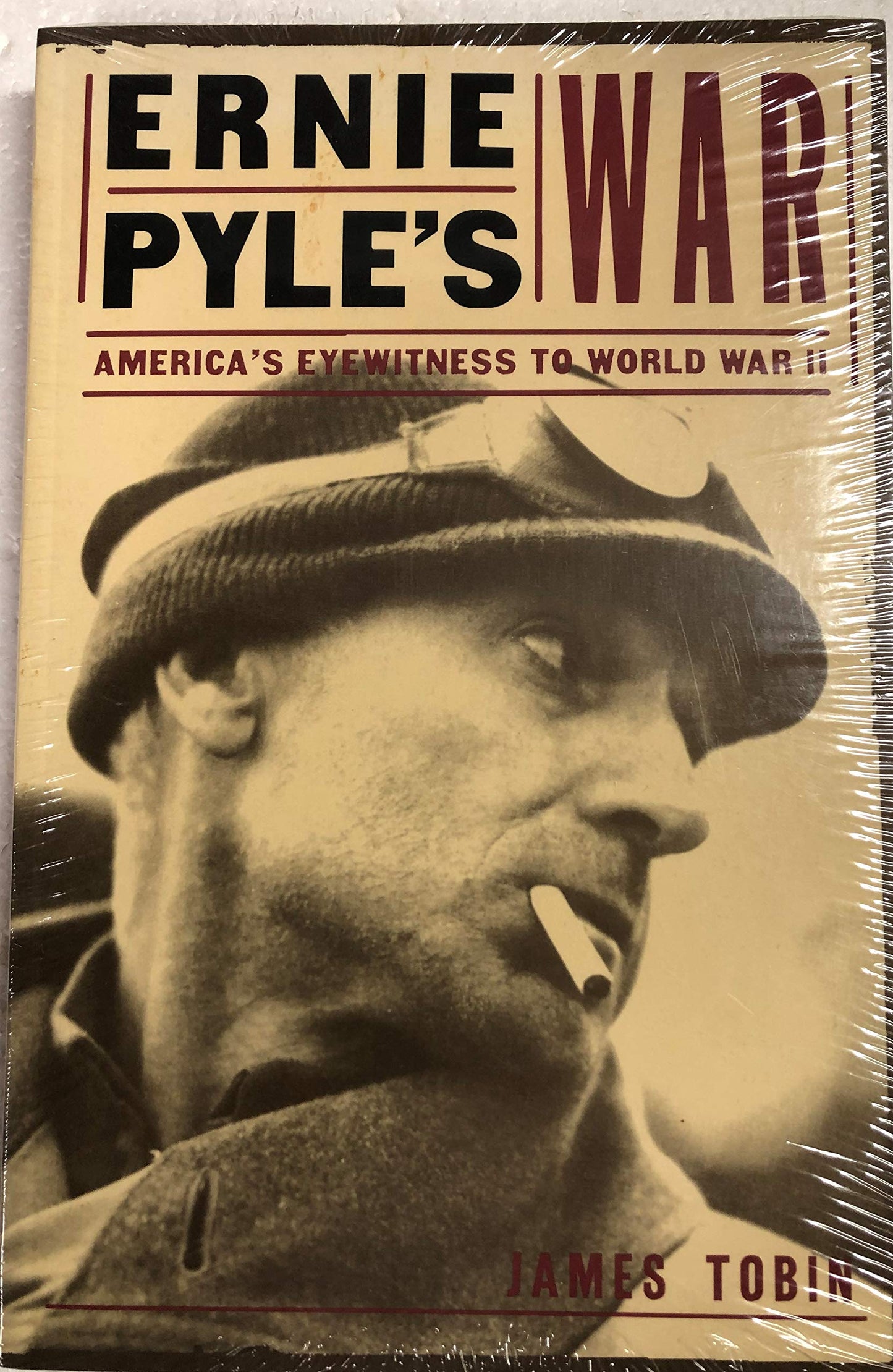Univ Pr of Kansas
Ernie Pyle's War: America's Eyewitness to World War II
Couldn't load pickup availability
Author: James Tobin
ISBN: 9780700608973
Publisher: Univ Pr of Kansas
Published: 1998
Binding: Paperback
Language: English
Condition: Used: Very Good
Clean, unmarked copy with some edge wear. Good binding. Dust jacket included if issued with one. We ship in recyclable American-made mailers. 100% money-back guarantee on all orders.
Military History 1665535
Publisher Description:
APRIL 18, 1945
Ernie Pyle's body lay alone for a long time in the ditch at the side of the road. Men waited at a safe distance, looking for a chance to pull the body away. But the machine gunner, still hidden in the coral ridge, sprayed the area whenever anyone moved. The sun climbed high over the little Pacific island. Finally, after four hours, a combat photographer crawled out along the road, pushing his heavy Speed Graphic camera ahead of him. Reaching the body, he held up the camera and snapped the shutter.
The lens captured a face at rest. The only sign of violence was a thin stream of blood running down the left cheek. Otherwise he might have been sleeping. His appearance was what people in the 1930s and '40s called "common." He had often been described as the quintessential "little guy, " but he was not unusually short. In fact, at five feet eight inches, his frame precisely matched the average height of the millions of American soldiers serving in the U.S. Army. It was his build that provoked constant references to his size -- a build that once was compared accurately to the shape of a sword. His silver identification bracelet, inscribed "Ernie Pyle, War Correspondent, " could have fit the wrist of a child. The face too was very thin, with skin "the color and texture of sand." Under the combat helmet, a wrinkled forehead sloped into a long, bald skull fringed by sandy-red hair gone gray. The nose dipped low. The teeth went off at odd angles. Upon meeting Pyle a few months earlier, the playwright Arthur Miller had thought "he might have been the nightwatchman at a deserted track crossing." In death his hands were crossed at the waist, still holding the cloth fatigue caphe had worn through battles in North Africa, Italy, France, and now here in the far western Pacific, a few hundred miles from Japan.
A moment later the regimental chaplain and four non-commissioned officers crawled up with a cloth litter. They pulled the body out of the machine gunner's line of fire and lifted it into an open truck, then drove the quarter-mile back to the command post on the beach. An Associated Press man was there. He already had sent the first bulletin:
COMMAND POST, IE SHIMA April 18, (AP) -- Ernie Pyle, war correspondent beloved by his co-workers, G.I.s and generals alike, was killed by a Japanese machine-gun bullet through his left temple this morning.
The bulletin went via radio to a ship nearby, then to the United States and on to Europe. Radio picked it up. Reporters rushed to gather comment. In Germany General Omar Bradley heard the news and could not speak. In Italy General Mark Clark said, "He helped our soldiers to victory." Bill Mauldin, the young soldier-cartoonist whose warworn G.I.'s matched the pictures Pyle had drawn with words, said, "The only difference between Ernie's death and that of any other good guy is that the other guy is mourned by his company. Ernie is mourned by the Army." At the White House, still in mourning only six days after the death of Franklin Roosevelt, President Harry Truman said, "The nation is quickly saddened again by the death of Ernie Pyle."
One of Pyle's editors at the Scripps-Howard newspapers, George Parker, spoke on the radio. "He went into war as a newspaper correspondent among many correspondents, " Parker said. "He came back a figure as great as the greatest -- as Eisenhower or MacArthur or Nimitz."Parker spoke of "that strange and almost inexplainably intimate way" in which Pyle's readers had known him. Indeed, people called newspaper offices all day to be sure Ernie Pyle was really dead. He had seemed so alive to them. Americans in great numbers had shared his life all through the war -- his energy and exhaustion; his giddy enjoyments and attacks of nerves; his exhilarations and fears. Through Pyle's eyes they had watched their "boys" go to distant wars and become soldiers -- green and eager at the start, haggard and worn at the end. Through his eyes they had

